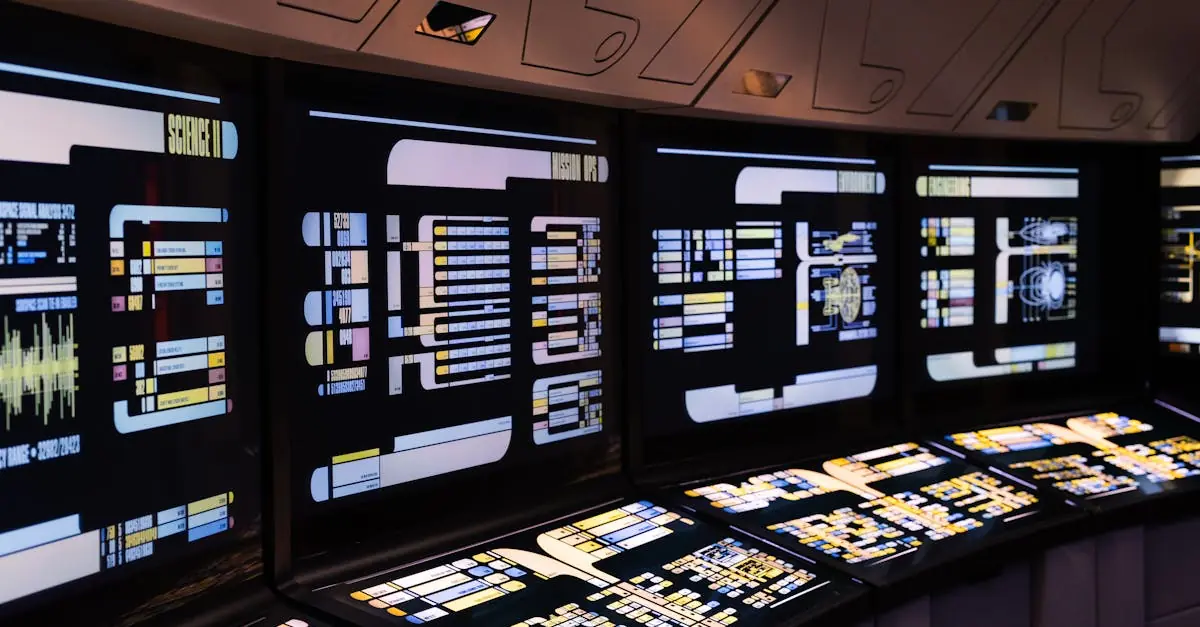When it comes to space exploration, Japan’s Aerospace Exploration Agency (JAXA) is the unsung hero that’s quietly shooting for the stars—literally. While the world is busy debating whether aliens exist or if pineapple belongs on pizza, JAXA is out there developing cutting-edge technology that could change our understanding of the universe. From launching rockets that seem to defy gravity to crafting rovers that can dance on the moon, JAXA’s innovations are nothing short of stellar.
Table of Contents
ToggleOverview of JAXA Space Tech
Japan’s Aerospace Exploration Agency (JAXA) plays a pivotal role in advancing space technology. Key innovations emerge from JAXA in rocket development, satellite technology, and planetary exploration. The H-IIA and H-IIB rockets are examples of reliable launch vehicles, capable of delivering payloads to orbit.
In recent years, JAXA’s research has focused on robotics, particularly with the design of the lunar rover, called Yutu-2. Yutu-2 demonstrates the ability to conduct complex analyses on the lunar surface. Advanced imaging systems on these rovers provide high-resolution data for scientific study.
Satellites also represent a core component of JAXA’s technology portfolio. The ALOS series has enhanced earth observation capabilities, contributing to disaster management and environmental monitoring. These satellites utilize sophisticated sensor technology to gather critical information about the planet’s health.
Collaboration marks another strength of JAXA. International partnerships with NASA and ESA facilitate the sharing of knowledge and resources. When missions involve multiple countries, JAXA’s expertise in technology and engineering significantly enhances mission outcomes.
In addition to traditional space tech, JAXA promotes innovative research in materials science and propulsion systems. Research into hybrid propulsion systems shows promise for future exploration missions. These advancements may lead to more efficient travel beyond low Earth orbit.
JAXA’s commitment to education also stands out. Initiatives that engage students and young professionals inspire the next generation of aerospace engineers. By fostering interest in space technology, JAXA ensures a steady pipeline of talent for future missions.
Through a combination of innovation and collaboration, JAXA continues to redefine the possibilities of space exploration technology. The agency’s work reflects a dedication to pushing the boundaries of human knowledge and capability in space.
Recent Innovations in JAXA Space Tech
JAXA continues to deliver groundbreaking technologies that shape the future of space exploration. Each innovation enhances capabilities, contributing to a deeper understanding of our universe.
Satellite Technology
JAXA’s ALOS satellites support advanced Earth observation efforts, playing a crucial role in disaster response and environmental monitoring. Enhanced imaging systems provide detailed data on land use and vegetation, guiding effective resource management. Recent improvements in satellite design focus on miniaturization. Smaller satellites achieve improved performance while lowering launch costs. Partnerships with international agencies extend the impact, enabling shared data access and research collaborations.
Robotics and Automation
Robotics remains a cornerstone of JAXA’s exploration initiatives. The lunar rover Yutu-2 explores the lunar surface, conducting in-situ analyses that yield valuable geological insights. Enhanced robotic systems integrate advanced sensors and artificial intelligence, allowing for autonomous decision-making during difficult tasks. Recent tests demonstrate improved mobility and stability in extreme conditions. As a result, these innovations pave the way for future missions, including human exploration of Mars and beyond.
JAXA’s Contributions to International Space Missions
JAXA’s contributions significantly enhance international space missions through collaboration and scientific advancements.
Collaborative Projects
Global partnerships are crucial to JAXA’s mission success. Joint projects with NASA and ESA offer shared resources and expertise. The Kibo module on the International Space Station exemplifies these collaborations, providing advanced research capabilities. Various international satellites developed together lead to comprehensive Earth observation networks. Important technological exchanges allow JAXA to contribute its expertise in robotics and satellite technology. Partnerships strengthen the global approach to space exploration, combining skills and technologies for mission efficiency.
Scientific Discoveries
Numerous scientific breakthroughs stem from JAXA’s work in space missions. Notable discoveries include asteroid sample retrieval from the Hayabusa missions, which provide insights into the solar system’s formation. Additionally, the Akasaki observatory contributes significant findings regarding gamma-ray bursts. New techniques in planetary exploration, such as those developed for lunar missions, enhance our understanding of lunar geology. JAXA’s commitment to analyzing gathered data leads to innovations in remote sensing and environmental monitoring. Such scientific endeavors continually push the boundaries of knowledge and discovery in space exploration.
The Future of JAXA Space Tech
JAXA continues to lead in pioneering space technology with exciting plans for the future. Upcoming missions promise further advancements in understanding the cosmos and expanding human capabilities.
Upcoming Missions
JAXA’s focus on lunar exploration includes the SLIM mission, targeting precise landings on the Moon’s surface. The agency plans to launch Artemis missions, contributing vital data to NASA’s lunar efforts. Additionally, the MMX mission aims to visit Mars’ moon Phobos and return samples to Earth. This groundbreaking initiative, scheduled for a 2024 launch, enhances insights into planetary formation. The agency’s commitment to Mars exploration includes the Martian moons and the potential for human missions beyond. JAXA emphasizes international collaboration, ensuring these missions benefit from global expertise and resources.
Technological Advancements
Innovative propulsion systems are a key focus for JAXA, promising enhanced travel efficiencies for deep space missions. Development of solar sails aims to harness solar radiation, enabling sustained propulsion over long distances. Robotics continues to evolve, with upcoming systems incorporating AI for autonomous operations during challenging missions. Advancements in satellite miniaturization lead to reduced launch costs and improved performance metrics for observational capabilities. JAXA’s research in materials science also plays a role, promoting lightweight yet durable components for spacecraft. Enhanced communication technology ensures seamless data transmission, critical for future research and exploration endeavors.
Conclusion
JAXA’s unwavering commitment to advancing space technology underscores its vital role in global space exploration. By developing cutting-edge rockets and pioneering satellite systems, JAXA not only enhances our understanding of the universe but also contributes significantly to international collaborations. The agency’s innovative approaches in robotics and materials science promise to redefine the future of space missions.
As JAXA embarks on ambitious projects like the SLIM and MMX missions, its focus on collaboration and technological advancement will ensure continued success. The agency’s efforts to inspire the next generation of aerospace professionals reflect a dedication to fostering innovation and discovery. Through its groundbreaking work, JAXA remains a key player in the ever-evolving landscape of space exploration.






